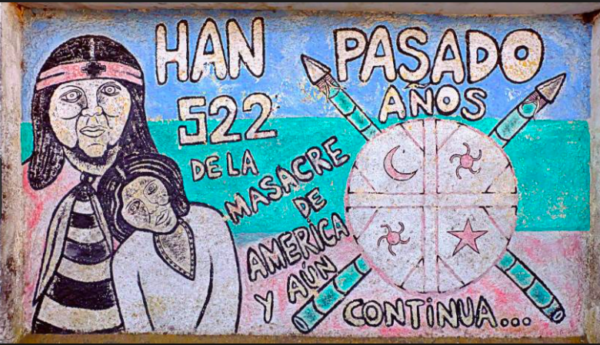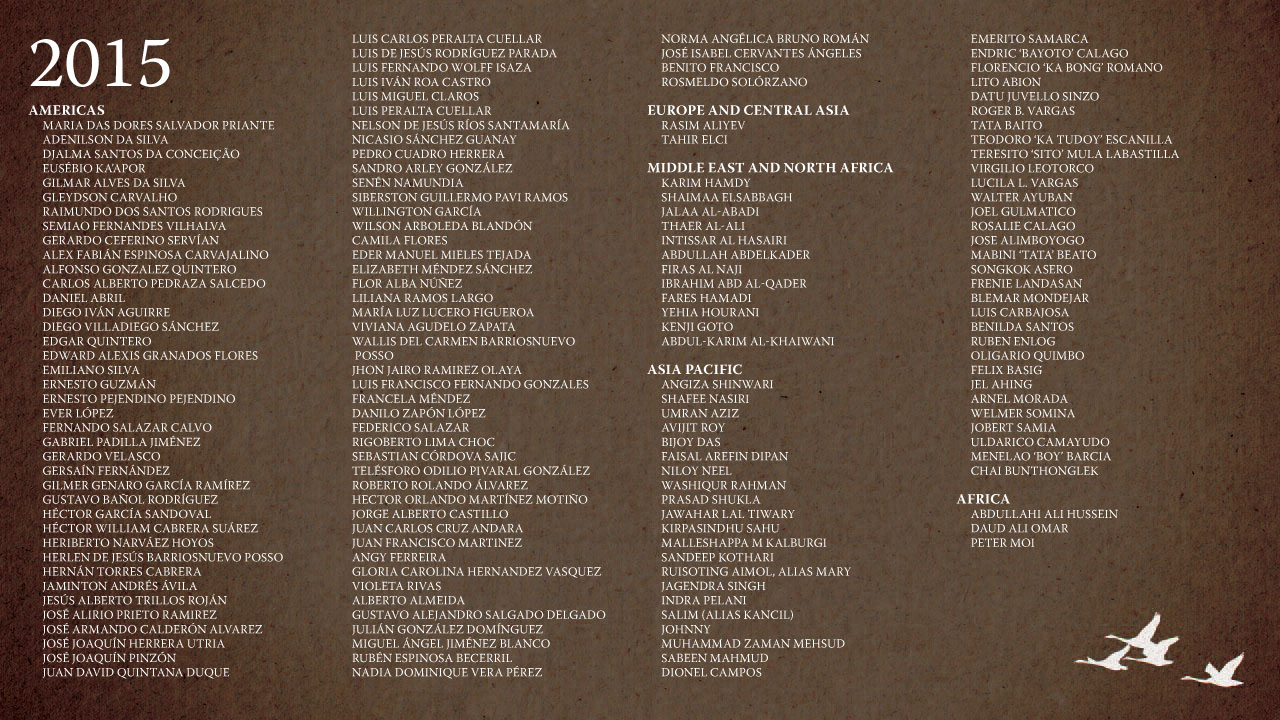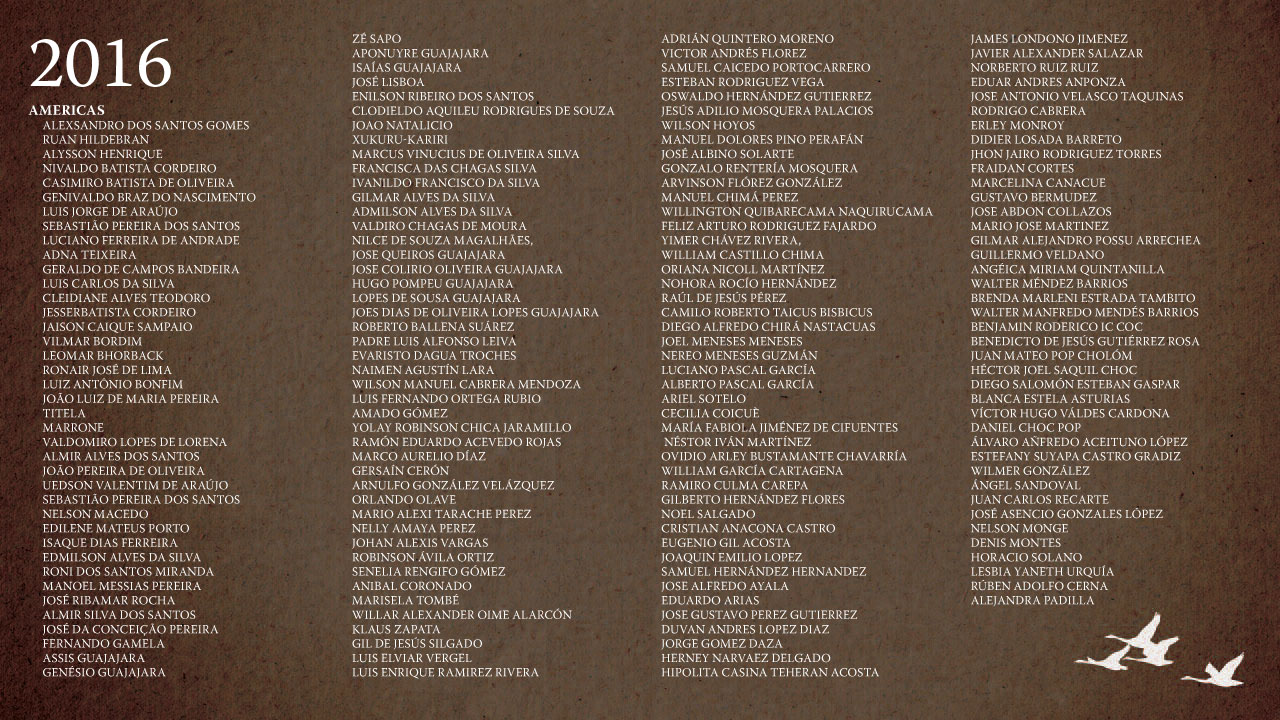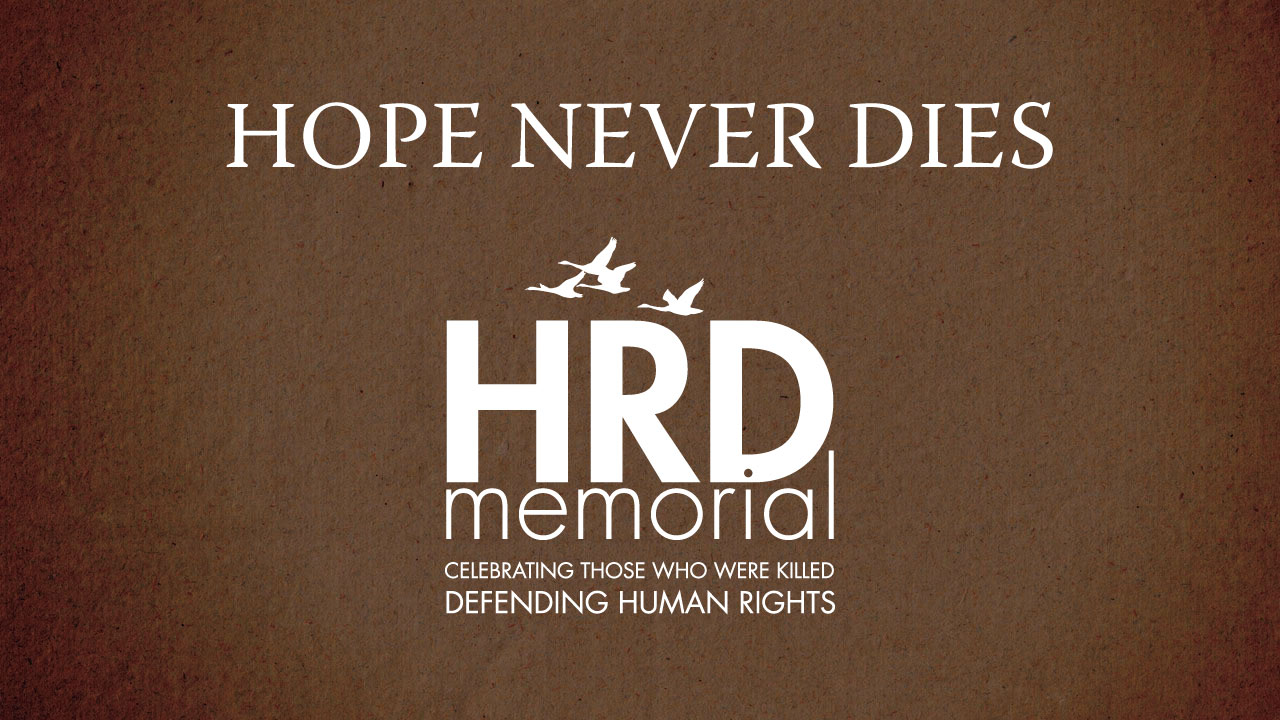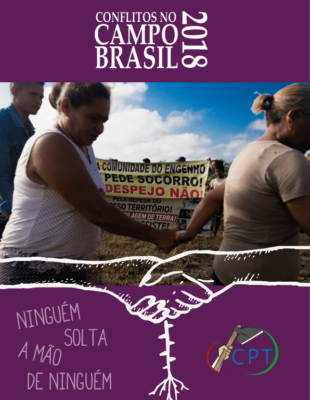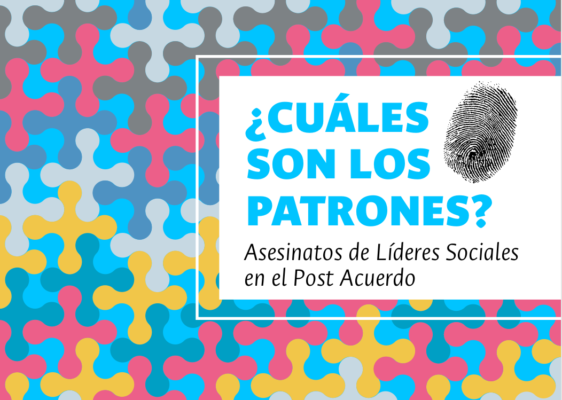Irish Minister for Foreign Affairs Simon Coveney, UN Special Rapporteur on the situation of human rights defenders Mary Lawlor and Front Line Defenders Executive Director Andrew Anderson inaugurate a Memorial monument in Iveagh Gardens to commemorate the lives of human rights defenders who have been killed because of their peaceful work.
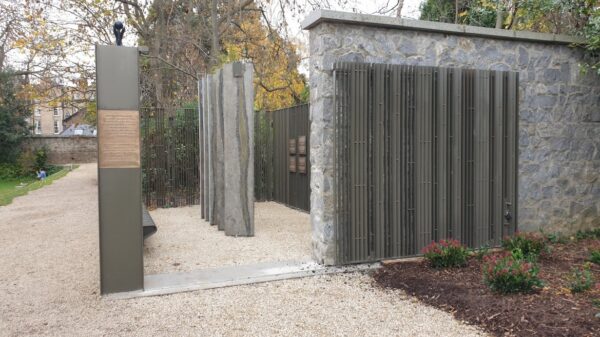
On Wednesday, 09 December 2020, International Human Rights Defenders Day, Irish Minister for Foreign Affairs Simon Coveney, UN Special Rapporteur on the situation of human rights defenders Mary Lawlor and Front Line Defenders Executive Director Andrew Anderson inaugurated the Human Rights Defender Memorial monument, dedicated to those who have been killed because of their peaceful work defending the rights of others.
The Memorial provides a physical space in the heart of Dublin city to recognise the important work of human rights defenders around the world, and pay tribute to the many brave and inspirational human rights defenders who have been silenced.
Designed by Grafton Architects, the monument is an Ogham garden, comprised of five standing stones, etched with ancient Irish Ogham script, each representing a native Irish tree. The space is enclosed by a crafted metal screen, on which are plaques, bearing the words of those who gave their life for their causes, and a bench encourages passers-by to sit and think about these brave individuals, who stood their ground.
The plaques include the following words spoken by environmental and indigenous peoples rights defender Bety Cariño at a gathering of human rights defenders in Dublin Castle in February 2010. Two months later she was shot dead during a peaceful solidarity procession in Northern Oaxaca, Mexico.
“Today we want to live another history: we are rebelling and we are saying enough is enough. Today and here, we want to say that they are afraid of us because we are not afraid of them, because despite their threats, despite their slander, despite their harassment, we continue to walk towards a sun which we think shines strongly”.
At the launch in Iveagh Gardens, Minister for Foreign Affairs Simon Coveney said: “The Irish government is proud of its partnership with Front Line Defenders in supporting and promoting the work of human rights defenders. This memorial will represent a place where Irish people, and those who visit our shores, can come and pay tribute to human rights defenders worldwide who have lost their lives in the peaceful pursuit of human rights and equality for all.”
Executive Director of Front Line Defenders, Andrew Anderson spoke about the legacies of the defenders: “It is important to remember the peaceful defenders of human rights that the killers have tried to erase, but also to celebrate their lives and achievements. Natalya Estemirova, Floribert Chebeya and Bertha Caceres were murdered because they made a difference, and they continue to inspire a new generation of human rights defenders.”
UN Special Rapporteur on the situation of human rights defenders, Mary Lawlor stated: “Between 2015 and 2019 the UN documented the killing of 1323 human rights defenders in 64 countries. It is shocking and unacceptable that human rights defenders have been killed in almost a third of all member States of the United Nations.”
Özlem Dalkiran, a human rights defender from Turkey attended the unveiling and spoke about her colleague and friend Hrant Dink, a human rights defender and journalist who was shot outside the offices of the newspaper where he worked in 2007: “By killing Hrant, they couldn’t kill his dreams. On the contrary they helped the seed he sowed to grow much faster.”
The Memorial monument in Dublin’s Iveagh Gardens is the physical form of the HRD Memorial project. Due to COVID-19 restrictions, the launch in December 2020 was limited in scale. An international launch is planned for Spring 2021 which will include the voices of the HRD Memorial network partners.

